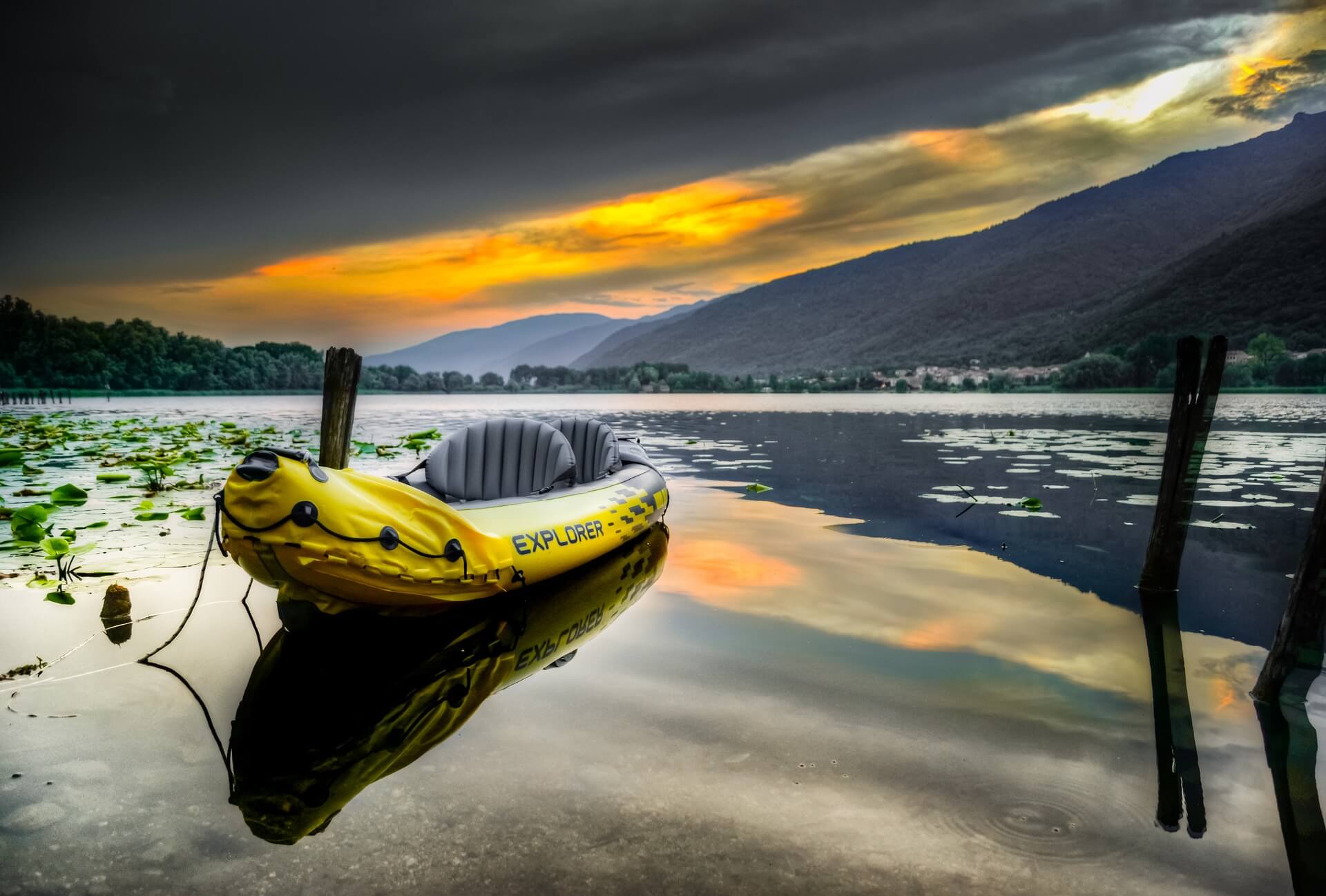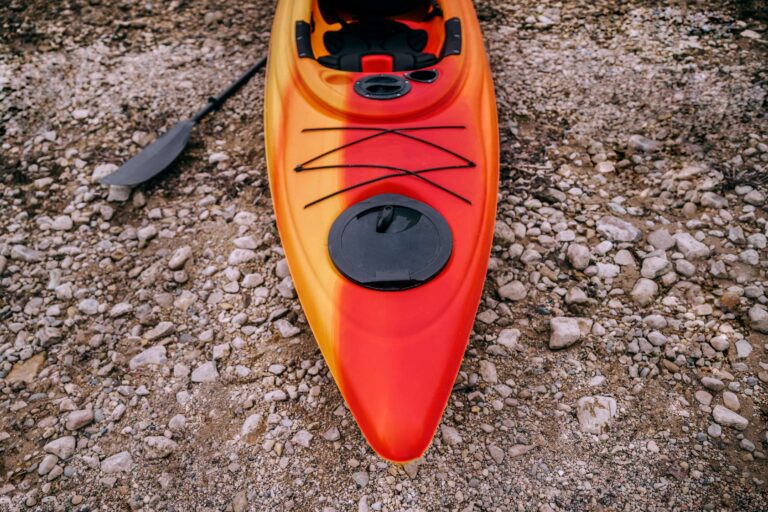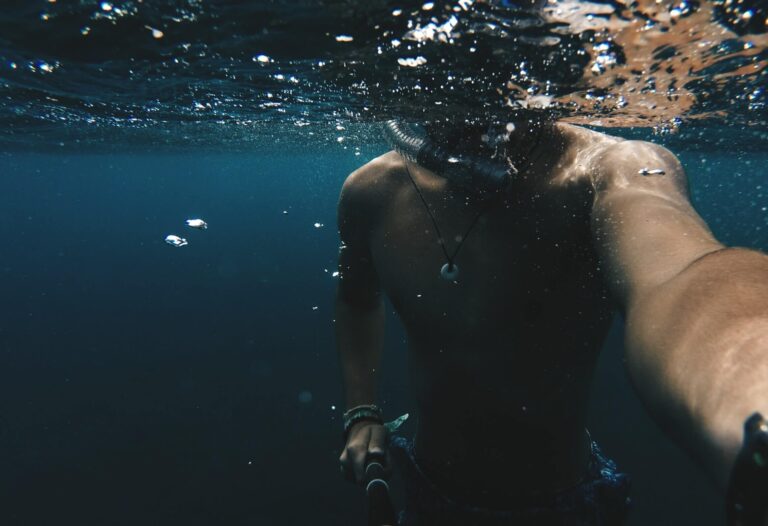Are Inflatable Kayaks Safe?

Did you know the history of kayaking dates back as far as 4,000 years ago? In fact, it’s one of the most exciting, freeing, and rewarding activities in the entire world. Moreover, it’s something you can do yourself, with a loved one, or with an entire group of family, friends, and others.
While most kayaks on the market are made of roto-molded polyethylene resins, wood, thermoform, or fiberglass, there’s a new type of material that’s sweeping the kayak community — inflatable kayaks. They come with a wide range of benefits, yet most people remain wary of them.
So, what is an inflatable kayak?
An inflatable kayak is made of either polyvinyl chloride (PVC), Hypalon, PVC Tarpaulin, or Nitrylon. They are nothing like the hardshell kayaks you’re used to because, as the name suggests, they’re inflatable and incredibly lightweight. As a result, they’re easy to carry, pack, and get used to on the water.
Despite many people not trusting the durability of inflatable kayaks, they’re much more stable and durable than you’d think. As a result, they can be utilized in various situations, including rivers, flat water, and even the ocean. They’re also cheaper than most kayaks you’re used to seeing.
How Safe Are Inflatable Kayaks?
As popular as inflatable kayaks are today, there’s one question on most kayakers’ minds — how safe are they? The truth is they’re much safer than most people realize. They aren’t made of the same material as pool toys, and they’re built to withstand some of the most extreme conditions.
Since most inflatable kayaks are built with many layers, they can take quite the beating when on the water. Of course, you should still take good care of your inflatable kayak and avoid damaging it as much as possible — much like you would any other kayak.
Will they puncture easily?
One of the things most paddlers are worried about the most is punctures. Of course, this is true with any inflatable object, but more so with a kayak that’s likely to endure rocks, animals, and any other debris found in the open water. Surprisingly, though, your inflatable kayak is fine in most cases.
Due to the multiple layers, the ultra-thick material, and the modern technology we have today, inflatable kayaks won’t puncture easily. With that said, it is possible. If you hit a sharp rock the right way or a seam breaks, there is a chance that air starts leaking out of your inflatable kayak.
It would be best if you kept this in consideration when paddling, as well as storing, your inflatable kayak. Try your best to avoid sharp objects, and don’t drag your kayak through sharp terrain. The good news is most are built with several different air chambers. If one chamber is punctured, you’ll likely still float — albeit not as well.
Can you stand in an inflatable kayak?
Another often asked question is whether or not a paddler can stand in an inflatable kayak. While most people think the kayak will fold or collapse when standing or getting situated inside, the strong, thick, rigid material is tough enough to hold most people’s weight.
Although you won’t be standing in your kayak often, it’s nice to know that you’ll be safe if you need to — especially when getting in or out. Of course, you’ll want to ensure the kayak is inflated all the way before setting out on your journey. An under-inflated kayak can be dangerous.
Is there a whitewater kayak?
There are a lot of activities that you can do in an inflatable kayak. In fact, they’re perfectly safe for most kayaking activities, much like any other kayak. You can kayak in lakes, rivers, and any flat water. If you plan on doing any heavy activities in one, make sure it’s built for that activity.
For example, there are inflatable kayaks made specifically for whitewater. These are built to withstand the conditions met while whitewater rafting. You can also find inflatable kayaks made specifically for fishing and those made specifically for kayaking in the ocean.
How long do they last?
Much like any product you’re interested in, an inflatable kayak can last you a long time when cared for and maintained properly. In most cases, an inflatable kayak will last anywhere from 7-10 years. Of course, you’ll need to store it properly, clean it often, and be careful when using it.
With that said, your inflatable kayak could see its final days in as little as two years if not maintained properly. While they’re usually cheaper and easier to replace once damaged, it’s not something you want to replace often. The good news is you can repair minor damage over time.
Some small repairs will only require a little dab of glue once deflated and cleaned. You can use a patch once deflated and cleaned for larger repairs (anything bigger than a pinhole). Before repairing an inflatable kayak, you should always refer to the owner’s manual.
What if they fill up with water?
One of the major downsides of a normal kayak is that they sink easily when filled with water. With an inflatable kayak, this isn’t the case. Since they’re filled with air, your inflatable kayak is extremely buoyant and will still float, even if it’s filled with water. This makes them much safer.
Not only that, but the lightweight nature of an inflatable kayak makes them much easier to lift and dump out any water from inside. You’re not only safe from sinking, but you can easily solve the issue in a hurry. The sooner it’s solved, the sooner you can get back to kayaking.
Are inflatable kayaks easy to maneuver in?
Kayaking isn’t an easy sport or activity. It requires a lot of paddling, which means you’ll need to have a lot of upper body and core strength. While the same holds for an inflatable kayak, it’s comforting to know they’re designed for easy maneuvering, easy steering, and easy turning.
This makes an inflatable kayak great for beginner paddlers. You won’t have a lot of weight to move around in, allowing you to control your kayak more closely. It’ll still take some practice, but you’ll be an experienced kayaker in no time!
What to Look For In an Inflatable Kayak
Much like any other type of kayak, not all inflatable kayaks are created equal, especially regarding the safety of one. With so many different inflatable kayaks available today, your safety often depends on which inflatable kayak you purchase and how durable it is.
To ensure you set yourself up for success in an inflatable kayak, let’s go over some of the most important features and considerations when purchasing the one that’s best-suited for you:
- Lightweight and compact, that way it’s easy to carry and pack.
- Type of kayak, especially if you plan on fishing or whitewater rafting.
- Material, you’ll want either a PVC, Hypalon, or Nitrylon kayak.
- Seating, especially if you plan on kayaking with someone else.
- Comfort, especially when going on long kayaking trips.
- Accessories, such as float bags, space for gear, fishing rod attachments, and more.
When you take your time in finding the right inflatable kayak, you ensure yourself of a safe and secure journey on the open water. Since anything can happen once you start paddling, the durability and stability of your kayak are critical. Hopefully, the tips above will help!
Safety Precautions When Using an Inflatable Kayak
Now that you’ve found the most durable and stable inflatable kayak for you and your family, it’s time to learn some of the more important safety precautions that are necessary when paddling on the open water. You need to avoid trouble and know how to get yourself out of it.
Don’t worry. We have some essential and helpful safety precautions to keep in mind once you set out on your journey. If you’re paddling with your family, make sure everyone involved understands the dangers involved. Let’s take a look:
- Always check the weather before setting out on a kayak trip.
- Make sure you’re properly dressed for the conditions.
- Always wear a personal flotation device and consider float bags.
- Make sure you’re not exceeding the weight limit allowed.
- Don’t kayak without first inspecting the kayak for damage.
- Don’t go kayaking without telling your loved ones where you’ll be and for how long.
- Wear a helmet, in case you come in contact with rocks or debris when flipping over.
- Stay hydrated, bring plenty of water, and don’t forget your snacks.
- Be aware of your surroundings and scout your location before setting out.
When kayaking, staying safe is the No. 1 priority, especially in an inflatable kayak. By following the precautions listed above, you’ll put yourself in a position to succeed while having fun and enjoying life. After all, that’s what kayaking and outdoor adventures are all about!
Related Questions
Most people are loaded with questions when they learn what an inflatable kayak is. They immediately imagine a pool toy, which wouldn’t last two seconds on a kayak trip. Don’t worry; your new inflatable kayak is different, and you’ll be much safer than you think.
If we didn’t answer your question above, here are some related questions that are commonly asked before trusting an inflatable kayak on open water:
- Do kayaks flip over easily?
Since inflatable kayaks are extremely sturdy and stable, it takes a lot to flip one over. It’s one of the main reasons, so many people prefer inflatable kayaks over other materials. In fact, most inflatable kayaks have a rigid floor that allows you to stand without tipping over.
In the event you feel yourself starting to flip over, you’ll want to reach your paddle out to the side and slap the water to balance yourself out. It takes a little practice, but you’ll eventually get the hang of it.
- Will a kayak drown me if it turns upside down?
Many beginner kayakers often ask this question. The good news is there’s a very slim chance you drown if the kayak turns upside down. Since most inflatable kayaks don’t have a spraydeck, you’ll roll off the kayak before it’s fully tipped over — meaning you won’t drown.
If you do have a spray deck in your kayak, it’ll be equipped with a release loop that you can pull. Once pulled, the spraydeck will detach itself, and you’ll easily roll out as if the spraydeck wasn’t there. You’ll drown only if you don’t know how to swim — which is another story.
- What should you wear when going kayaking?
When kayaking, your clothes and layers should be both comfortable and safe. You’ll want to pay attention to the weather outside, but also the temperature of the water (since it’s often different). A wetsuit is preferred, but you might want to layer with non-cotton material to stay warm.
With that said, you should also wear clothes that are easy to move in, fabric that’s abrasion-resistant, and always wear a personal flotation device (PFD). You should also wear gloves and a hat in colder temperatures if needed.
- Do I need float bags for my kayak?
If you have the space for a float bag, you should definitely consider adding them to your kayak. They can help in a wide range of situations, especially if the kayak is capsized. They’re full of air and allow the kayak to float higher when turned or flipped over. This can be very helpful.
Float bags are generally found in the kayak’s front (bow) and back (stern). They’ll also help displace water that would normally fill up your kayak. They’re not needed as much with inflatable kayaks but can still help and should still be considered if there’s enough room.
- What precautions should I take if I kayak alone?
Kayaking alone can be an extremely memorable experience for anyone. It’s a freeing experience that allows you to get away from the many distractions around us. However, if you plan on taking part in this activity, you should take extreme precautions.
First, make sure your loved ones know you’re going on this trip, where you’re going kayaking, and how long you plan ongoing. Always check the weather beforehand, pack enough safety gear, learn your destination like the back of your hand, and paddle responsibly.






